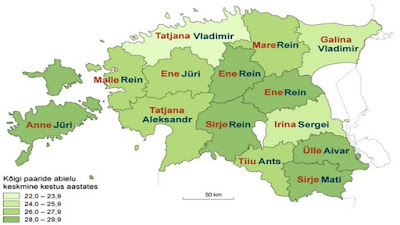To commemorate the 99th anniversary of the Republic of Estonia, President Kersti Kaljulaid bestowed 113 state decorations on individuals yesterday for their distinguished work and support of the Estonian nation. The event took place at the NUKU Theatre in Tallinn.
It is great to see some familiar names among the recipients. Maie Barrow in particular has done an excellent job preserving Estonian heritage and culture in Australia. Congratulations!
2017 RECIPIENTS OF ESTONIAN STATE DECORATIONS
The Order of the National Coat of Arms, 2nd Class
Taavi Rõivas, Prime Minister of the Republic of Estonia from 2014-2016
The Order of the White Star, 3rd Class
Marek Helm, developer of the tax and customs system
Andrei Jämsä, rower
Priit Perens, promoter of banking
Allar Raja, rower
Kaspar Taimsoo, rower
Lembit Ulfsak, actor
The Order of the White Star, 4th Class
Tõnu Aas, power engineer
Hiie Asser, promoter of language immersion, school director
Jaan Janno, mathematician, Tallinn University of Technology professor
Anne Kahru, ecotoxicologist, Estonian Academy of Sciences researcher and professor
Tiina Kallavus, school director, promoter of special needs education
Sirje Keevallik, atmospheric physicist, professor at Tallinn University of Technology
Ivi Kesküla, judge
Epp Maria Kokamägi, artist
Ülle Kruus, art historian
Mare Kõiva, folklore researcher
Andrus Maruoja, state official
Andrus Miilaste, judge
Natalia Miilvee, prosecutor
Ülle-Marike Papp, social scientist, promoter of gender equality
Peeter Peedomaa, promoter of entrepreneurship
Anti Puusepp, promoter of entrepreneurship
Riina Reinvelt, ethnologist, developer of the Estonian National Museum
Aarne Siimsen, state official
Niina Sõtnik, school director, promoter of education
Aare Toikka, producer, theater director
Indrek Treufeldt, TV journalist, lecturer
Peeter Urbla, film director, promoter of culture
Raul Vaiksoo, architect
Martin Veinmann, actor, teacher
Taavi Veskimägi, promoter of the energy sector
Raivo Vilu, biotechnologist, Tallinn University of Technology professor
Andres Ülviste, prosecutor
The Order of the White Star, 5th Class
Anneli Ammas, journalist
Väino Aren, actor
Angela Arraste, dance teacher
Maie Barrow, preserver of Estonian heritage in Australia
Aavi Dobrõš - recorder of history
Ivo Felt, film producer, sound engineer
Igor Garšnek, composer, musicologist
Rein Grünbach, art teacher
Johan Patrik Göransson, clergyman, keeper of Estonian-Swedish cultural heritage
Taimi Hillak, promoter of entrepreneurship
Maaja-Katrin Kerem, qualifications system developer
Ülle Kikas, promoter of education
Harri Koiduste, promoter of wrestling
Kaja Kärner, radio journalist
Mart Laanpere, promoter of the digital sector in education
Ira Lember, author
Ulla Länts, radio journalist
Silja Lättemäe, journalist
Kadri Mälk, jewelry designer
Janika Mölder, gymnastics trainer
Anne Oruaas, promoter of local life in Harju County
Sirje Plaks, promoter of lifelong learning
Rein Purje, recorder of history
Rein Raudsep, geologist, state official
Evar Riitsaar, artist, promoter of Seto culture
Ann Roos, organizer of children's creative contest "Sten's fairytale contest"
Ants Roos, organizer of children's creative contest "Sten's fairytale contest"
Ülo Roos, historian
Olivia Saar, children's author
Harry Seinberg, athletics trainer
Laine Sepp, music teacher
Juhan Sihver, Estonian broadcasting historian
Liivi Soova, promoter of handicrafts and folk art
Toomas Mihkel Sõrra, preserver of Estonian heritage in the U.S.
Tõnu Talvi, conservationist
Tiiu Teesalu, historian
Peeter Vähi, composer
The Order of the White Star, Medal
Reet Kaljula, promoter of the will to defend
Krzysztof Mieczysław Kaminski, servant of the Estonian Embassy in Poland
Tiina Kivikas, adjuster
The Order of the Red Cross, 2nd Class
Tõnu Endrekson, rower
Enn Jõeste, pathologist
Kaiu Suija, oncologist, helper of cancer patients
Karin Varik, children's surgeon
The Order of the Red Cross, 3rd Class
Märt Elmet, cardiologist
Ants Kass, orthopedist
Janek Laev, rescue officer
Toomas Tartes, surgeon
The Order of the Red Cross, 4th Class
Marianne Kuzemtšenko, helper of individuals with autism
Annika Laats, clergyman, organizer of pastoral care
Katarina Seeherr, music therapist, helper of individuals with special needs
Teija Tuula Marjatta Toivari, hospice developer
Reet Veenpere, speech therapist
The Order of the Red Cross, 5th Class
Arne Aas, blood donor
Priit Kaja, blood donor
Allen Leego, blood donor
Tõnu Lukk, blood donor
Aina Pääro, promoter of health
The Order of the Cross of the Eagle, 1st Class
Werner Freers, promoter of defense cooperation, general, Germany
The Order of the Cross of the Eagle, 3rd Class
Arnaud Coustillière, promoter of defense cooperation, vice admiral, France
The Order of the Cross of the Eagle, 4th Class with Swords
Eduard Meemann, freedom fighter
The Order of the Cross of the Eagle, 4th Class
Margo Grosberg, active serviceman, major
Illar Jõgi, police official, police lieutenant colonel
Hendrik Lõbu, security police officer
Merike Pappel, security police officer
The Order of the Cross of the Eagle, Silver Cross
Ramil Sadikov, active serviceman, sergeant major
The Order of the Cross of the Eagle, Iron Cross
Janek Pinta, police official, senior superintendent
Maarja Punak, police official, senior superintendent
The Order of the Cross of Terra Mariana, 2nd Class
Alexander Russell Vershbow, supporter of security cooperation, U.S.
The Order of the Cross of Terra Mariana, 3rd Class
Heinrich Brauss, NATO deputy secretary general Deputy Secretary General
Pär Anders Nuder, promoter of Estonian-Swedish relations
James J. Townsend, Jr., supporter of security cooperation, U.S.
Tadahiko Yoshino, promoter of Estonian-Japanese relations
The Order of the Cross of Terra Mariana, 4th Class
Norbert Angermann, promoter of cooperation in history, Germany
Serge Arnould, former honorary consul in Lyon, France
Bo Hugemark, promoter of Estonian-Swedish relations
Michael N. Schmitt, promoter of cybersecurity cooperation, U.S.
The Order of the Cross of Terra Mariana, 5th Class
Nils Riess, producer, promoter of Estonian theater, U.S.
Arvo Sulo Survo, promoter of Finno-Ugric culture, Finland
To view photos of the ceremony, please click here:
President andis täna riikliku teenetemärgi 113 inimesele



























